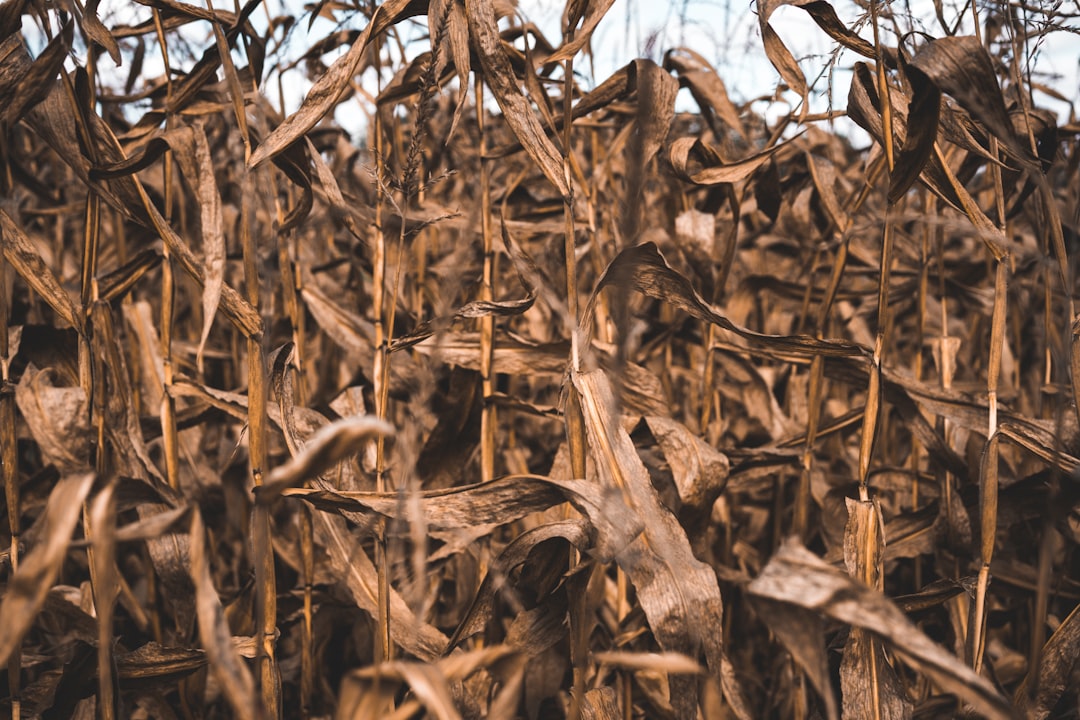What is it about?
Plant disjunctions have provided some of the most intriguing distribution patterns historically addressed by biogeographers. We evaluated the three hypotheses that have been postulated to explain these patterns [vicariance, stepping-stone dispersal and long-distance dispersal (LDD)] using Munroa, an American genus of grasses with six species and a disjunct distribution between the desert regions of North and South America. The ages of clades, cytology, ancestral characters and areas of distribution were investigated in order to establish relationships among species, to determine the time of divergence of the genus and its main lineages, and to understand further the biogeographical and evolutionary history of this genus. Bayesian inference recovered the North American M. pulchella as sister species to the rest. Molecular dating and ancestral area analyses suggest that Munroa originated in North America in the late Miocene–Pliocene (7.2 Mya; 8.2–6.5 Mya). Based on these results, we postulate that two dispersal events modelled the current distribution patterns of Munroa: the first from North to South America (7.2 Mya; 8.2–6.5 Mya) and the second (1.8 Mya; 2–0.8 Mya) from South to North America. Arid conditions of the late Miocene–Pliocene in the Neogene and Quaternary climatic oscillations in North America and South America were probably advantageous for the establishment of populations of Munroa. We did not find any relationship between ploidy and dispersal events, and our ancestral character analyses suggest that shifts associated with dispersal and seedling establishment, such as habit, reproductive system, disarticulation of rachilla, and shape and texture of the glume, have been important in these species reaching new areas.
Featured Image
Why is it important?
Plant disjunctions have provided some of the most intriguing distribution patterns historically addressed by biogeographers. We evaluated the three hypotheses that have been postulated to explain these patterns [vicariance, stepping-stone dispersal and long-distance dispersal (LDD)] using Munroa, an American genus of grasses with six species and a disjunct distribution between the desert regions of North and South America. The ages of clades, cytology, ancestral characters and areas of distribution were investigated in order to establish relationships among species, to determine the time of divergence of the genus and its main lineages, and to understand further the biogeographical and evolutionary history of this genus. Bayesian inference recovered the North American M. pulchella as sister species to the rest. Molecular dating and ancestral area analyses suggest that Munroa originated in North America in the late Miocene–Pliocene (7.2 Mya; 8.2–6.5 Mya). Based on these results, we postulate that two dispersal events modelled the current distribution patterns of Munroa: the first from North to South America (7.2 Mya; 8.2–6.5 Mya) and the second (1.8 Mya; 2–0.8 Mya) from South to North America. Arid conditions of the late Miocene–Pliocene in the Neogene and Quaternary climatic oscillations in North America and South America were probably advantageous for the establishment of populations of Munroa. We did not find any relationship between ploidy and dispersal events, and our ancestral character analyses suggest that shifts associated with dispersal and seedling establishment, such as habit, reproductive system, disarticulation of rachilla, and shape and texture of the glume, have been important in these species reaching new areas.
Perspectives
Plant disjunctions have provided some of the most intriguing distribution patterns historically addressed by biogeographers. We evaluated the three hypotheses that have been postulated to explain these patterns [vicariance, stepping-stone dispersal and long-distance dispersal (LDD)] using Munroa, an American genus of grasses with six species and a disjunct distribution between the desert regions of North and South America. The ages of clades, cytology, ancestral characters and areas of distribution were investigated in order to establish relationships among species, to determine the time of divergence of the genus and its main lineages, and to understand further the biogeographical and evolutionary history of this genus. Bayesian inference recovered the North American M. pulchella as sister species to the rest. Molecular dating and ancestral area analyses suggest that Munroa originated in North America in the late Miocene–Pliocene (7.2 Mya; 8.2–6.5 Mya). Based on these results, we postulate that two dispersal events modelled the current distribution patterns of Munroa: the first from North to South America (7.2 Mya; 8.2–6.5 Mya) and the second (1.8 Mya; 2–0.8 Mya) from South to North America. Arid conditions of the late Miocene–Pliocene in the Neogene and Quaternary climatic oscillations in North America and South America were probably advantageous for the establishment of populations of Munroa. We did not find any relationship between ploidy and dispersal events, and our ancestral character analyses suggest that shifts associated with dispersal and seedling establishment, such as habit, reproductive system, disarticulation of rachilla, and shape and texture of the glume, have been important in these species reaching new areas.
Dr Leonardo David Amarilla
IMBIV-CONICET
Read the Original
This page is a summary of: A tale of North and South America: time and mode of dispersal of the amphitropical genusMunroa(Poaceae, Chloridoideae), Botanical Journal of the Linnean Society, July 2015, Oxford University Press (OUP),
DOI: 10.1111/boj.12304.
You can read the full text:
Contributors
The following have contributed to this page










